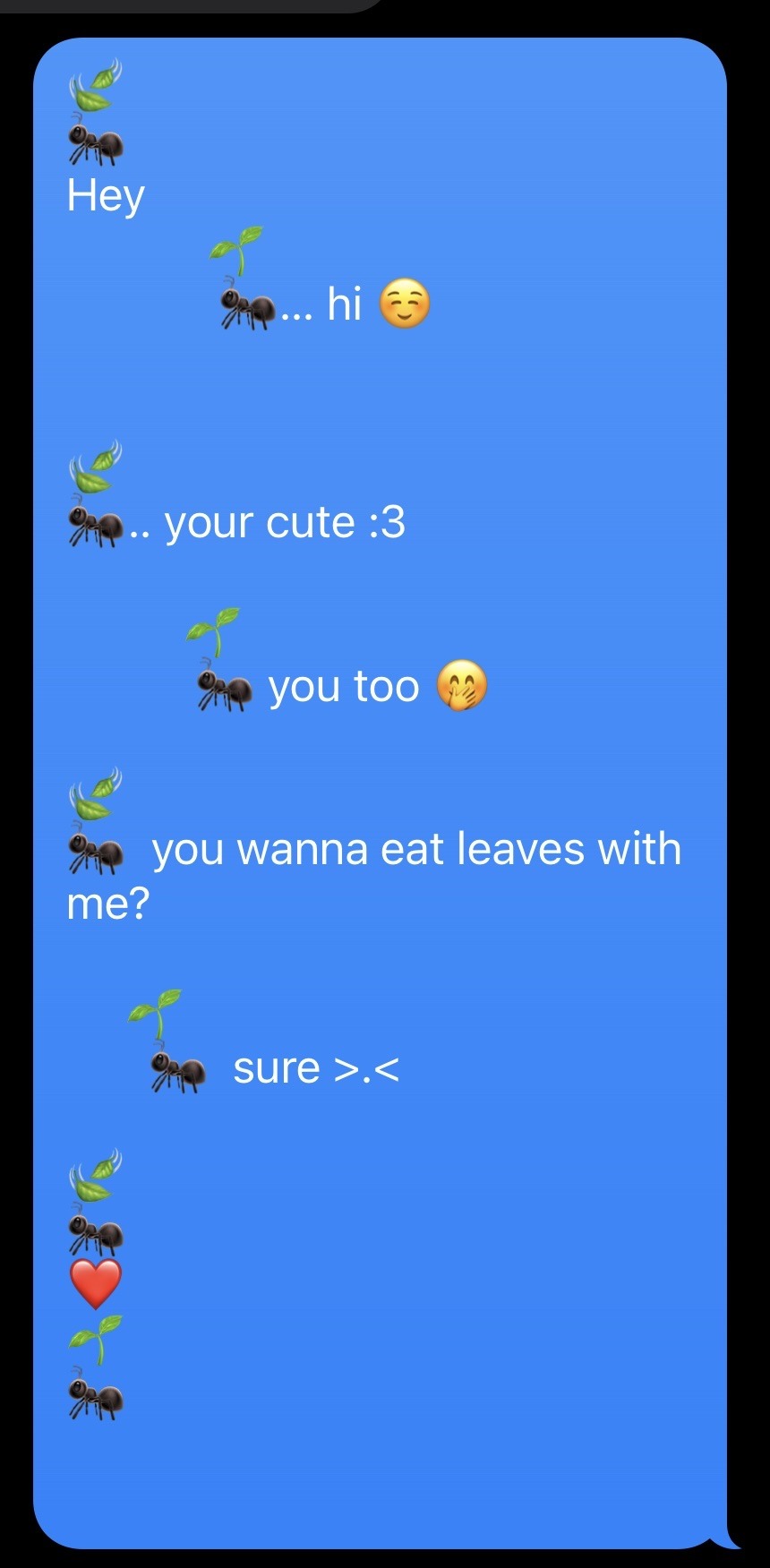#leaf cutter ants
Text
Alex Wild got me interested in attaphila fungicola with this first super cute photo of the myrmecophilous roaches that live with leaf cutter (fungi farming) ants.

I think their habit of harmlessly hitching rides on ants could inspire a line of adorable felt pillboxes. Can you see it?


#pillbox hat#ants#antposting#insects#bugblr#ant#myrmecology#roaches#invertebrates#fashion#inspiration#antblr#classic fashion#pillbox#haberdashery#hats#bugs#myrmecophilous roaches#leaf cutter ants#leafcutter ants#atta
283 notes
·
View notes
Text

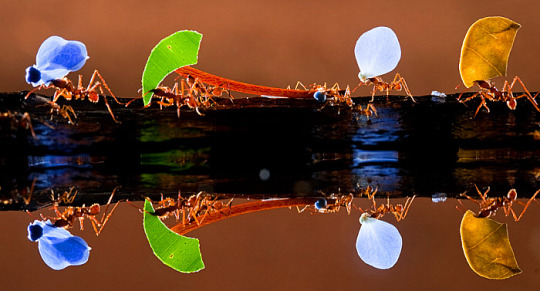
Leaf cutter ants (Atta cephalotes)
Photos by Bence Mate
#Atta cephalotes#atta#leaf cutter ants#ants#hymenoptera#formicidae#formicoidea#insects#entomology#ant photography#insect photography#nature
12 notes
·
View notes
Text
Bug fact 003:
Leafcutter ants are a group formed by 47 species of ants of the genera Atta and Acromyrmex. Their range extends from South America to the southern United States.
These ants have been farming for longer than humans have existed. Their relationship with fungi started around 60 million years ago, and since then it has been it has changed both the biology of the ants and the fungi they farm. Modern leafcutter ants practice what is known as high agriculture, which means that they have fully domesticated the fungi species they farm. These fungi are completely dependent on the ants for survival, and can't reproduce with wild fungi. They also produce fruit-like structures that can be easily harvested by the ants, something that has not been observed in their wild relatives. Similarly, the lifestyle of modern leafcutter ants revolves around feeding and taking care of their fungal gardens and they are physically incapable of surviving without them. Some species have ants covered in a special kind of bacteria that produces antibiotic compounds and they have only been found in leafcutter ant nests. Ants are extremely attentive and sensitive to the fungi state, picking up chemical signals from it and feeding it only the best plant material they can find.
This agricultural lifestyle has led these ants to develop social structures that are even more complex and specialized than those observed in other ant species.
Other fun facts about them are the enormous size their nests can grow to (up to 600 Square meters!), and the fact that their exoskeleton is covered by a thin layer of crystalline mineral growth produced by the ants themselves. They are my favorite ants for a reason!
Pictures via Pinterest (1) (2)

Look at them little ants taking care of mom. These are Atta Texana. One thing I love about these queens is just how big they are.

Look at them go!
15 notes
·
View notes
Text

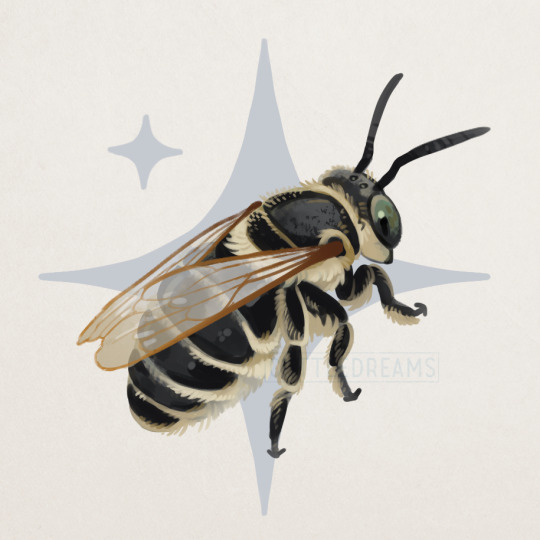
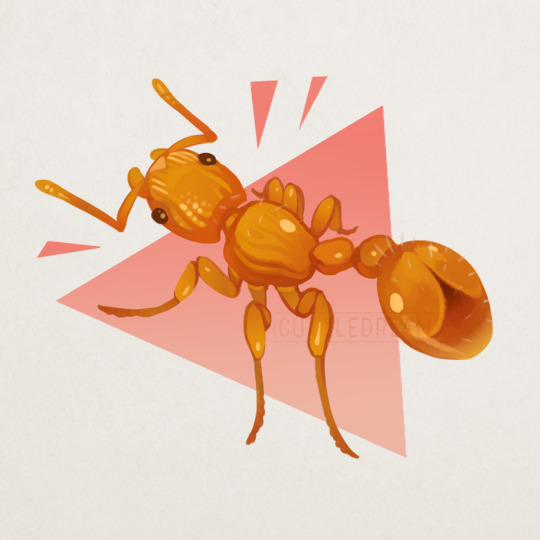
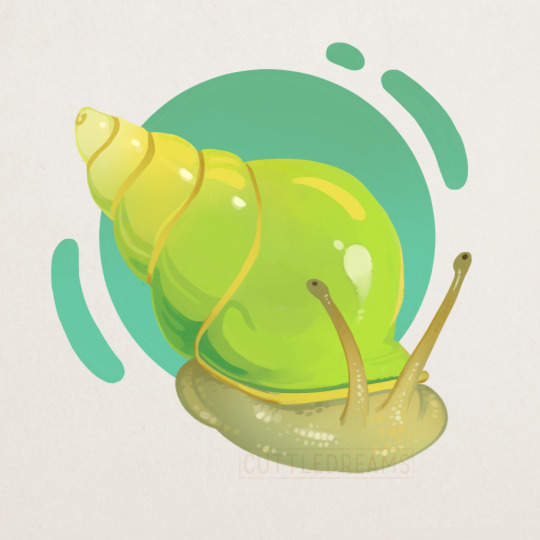
What time is it? Invertober time! I'm really committing to finishing the prompt list this year.
First four entries of Invertober:
Sunburst Diving Beetle
Silvery Leaf Cutter Bee
Little Fire Ant
Emerald Green Snail
Invertober is put together by fossilforager! Prompt List
#cuttledreams#invertober#sunburst diving beetle#silvery leaf cutter bee#little fire ant#emerald green snail#I'm sorry fossil it would let me tag you directly for some reasonnnn ;o;
655 notes
·
View notes
Text

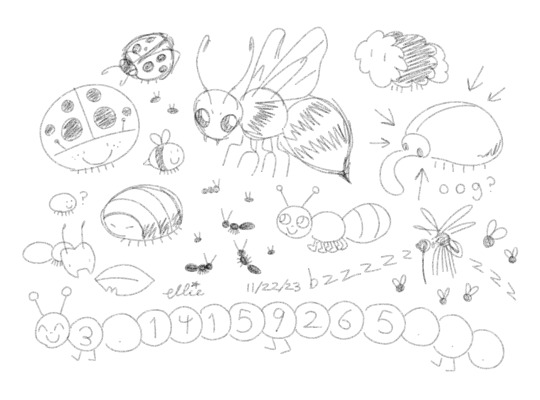
some bug doodles for @www-grayson-com :D wawa
#dandy's doodles#bugs#lepidopterist tag#all of these were completely from memory!!! i was trying to do a mix of a more realistic style and a more cartoony one#exemplified by the top image... with two pretty butterflies... :)#the bottom image has a few ladybugs and bees and roly-polies and ants (including a leaf-cutter ant)#and some caterpillars (including a woolly bear) and flies and a mosquito and a silly little weevil :D
20 notes
·
View notes
Text



ants farming aphids and a dragonfly larvae molt
#i love bugggg#ants are so wild because they do their little farming#i think a lot about leaf cutter ants and their fungus cultures they carry from nest to nest so some are hundreds of years old#ants are one of the few bugs i wouldn't keep because i feel like i could never provide them the space and enrichment? they need because#they are just so complex and have such widespread networks that it feels weird
32 notes
·
View notes
Text
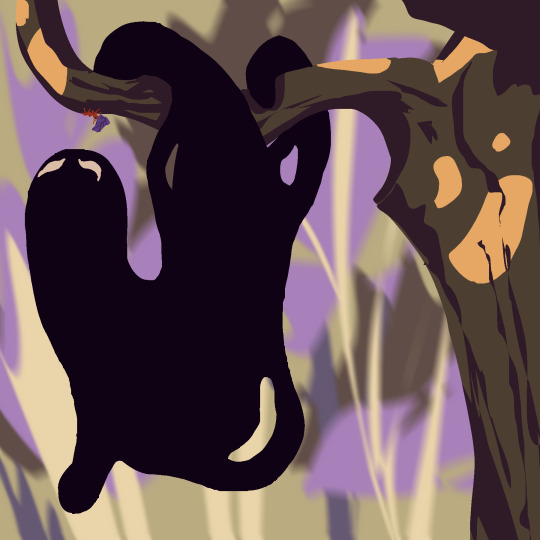

the world is so beautiful
#venom#i think they would like to spend a day at the park#'cam there aren't any leaf cutter ants in new york' well actually the american museum of natural history has some#AND if you think about it that makes them both beautiful escaped aliens on a park adventure#i should draw more of these its fun to just lasso tool my way into heaven#my art
10 notes
·
View notes
Text

Still thinking about how big Gideon’s sword actually is
#fanart#gideon the ninth#harrow nonagesimus#tlt#the locked tomb#harrow the ninth#literally a leaf cutter ant#🐜
19 notes
·
View notes
Text

My favourite bug photo I’ve ever taken
#bugs#photography#insect photography#insects#katydid#I don’t remember what kind#I took this last year at a butterfly farm#they also had some leaf cutter ants a lot of frogs#also a crocodile and some axotls??#idk how u spell that#it was really cool tho got to see a lot of butterflies but I will always be a beetle guy at heart#this guys face just cracks me up#sorry for the essay in the tags Jesus#I need to learn to shut the fuck up#entomology#macro photography
4 notes
·
View notes
Text
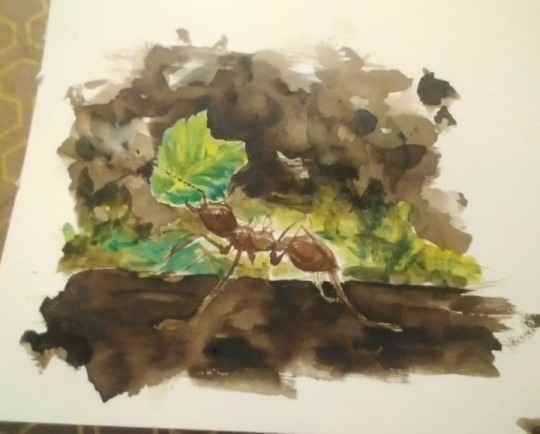
Nooo my other half D:
4 notes
·
View notes
Text
On the hunt for Atta mexicana queens with arthropod antics.
youtube
A little more context on what's going on in this video. Ants mate once in their lives. The queens can live for years, some species for decades. But they only mate once when the winged males and females (alates) leave the nest. All of the ants from a species must coordinate to fly on the same day at the same time in a region. They like to fly after rain, but not *in* rain.
They fly at dawn. This gives the queens the best chance. The soil will be soft and there will be water to start the colony and grow their fungus. If you want to keep a colony of ants you need to capture a queen just after she mates. Hence he keeps going out waiting for them to fly.
This collective decision made by thousands of ants from multiple colonies.
The workers play a big part in deciding and will keep the queens from flying pulling them back into the nest if it's not perfect.
When it comes to flying ants need all the help they can get. As much as I love ants... they are not good at flying. They are the aerial embarrassments of the Hymenoptera family.
Bees and wasps fall from the sky when they see them, dead from 2nd hand embarrassment.
youtube
He's doing his best.
#ants#flying ants#good ant videos#atta#atta mexicana#leaf cutter ants#insects#antposting#bugs#bugblr#invertebrates#ant#antblr#myrmecology#antkeeping#Youtube
7 notes
·
View notes
Text

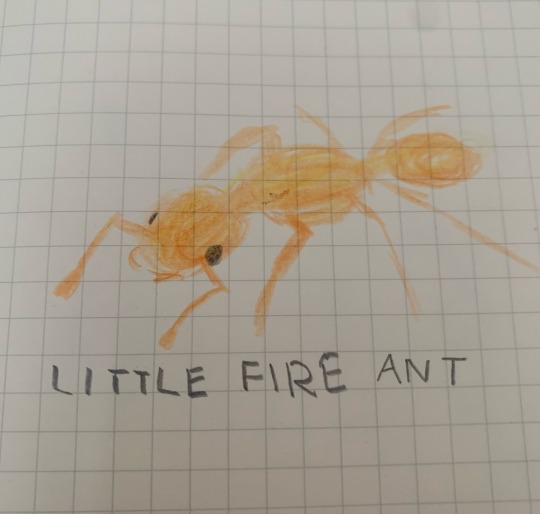
Invertober days 2 and 3: silvery leaf cutter bee and little fire ant!
#invertober#invertober 2023#bugs#insects#silvery leaf cutter bee#bee#little fire ant#fire ant#ant#my art
5 notes
·
View notes
Photo
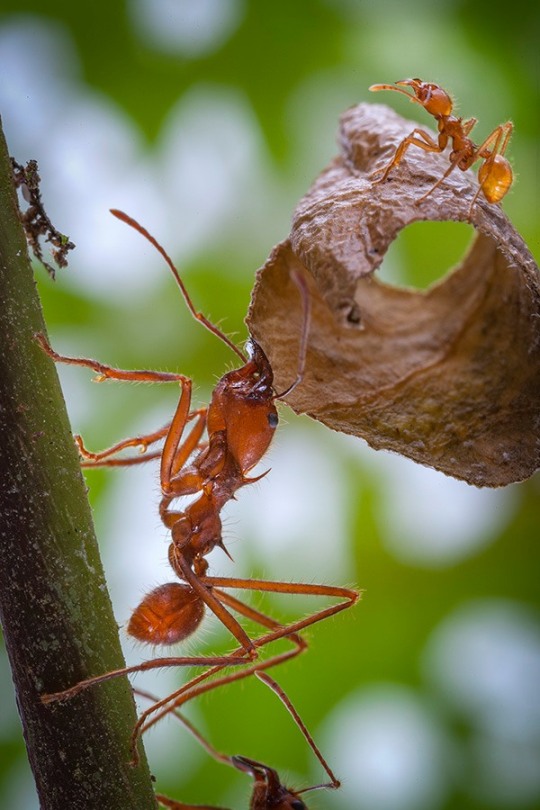



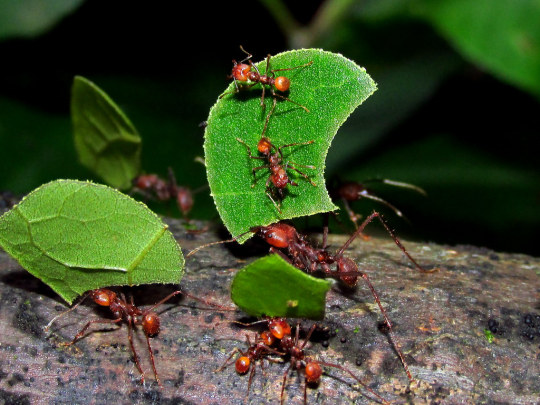

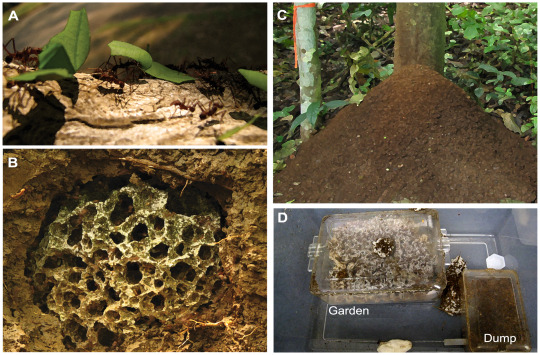
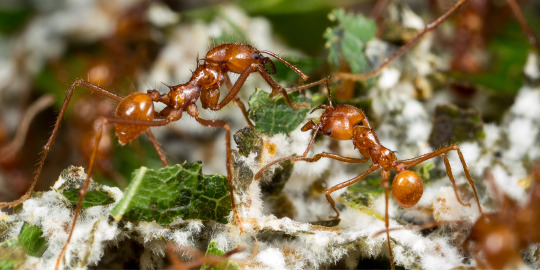
Atta cephalotes is a species of leafcutter ant in the tribe Attini (the fungus-growing ants) which is widely distributed throughout North, Central, and South America from as far north as Mexico to as far south as Bolivia. Here they tend to inhabit tropical rainforests, cloud forests, and mixed mosaics spending the bulk of there time in the understory and on the forest. Although leafcutter ants are famous for there cutting and gathering of leaves as well as other plant material such as seeds, flowers, vines, fruit and even occasionally fecal matter and dead invertebrates, they actually don’t eat these substances regularly, instead they use this organic matter to nourish and cultivate expansive fungi farms which provide the majority of the colonies nutrition. These are colonial insects with complex division of labor. A single long-lived queen (up to 20 years) and millions of sterile workers live together in an enormous underground nest which can be up to 100 square meters. Workers cut and carry leaf fragments, clean and mulch leaves, tend symbiotic fungus gardens, care for queen and many larvae/pupae, and defend the nest, together with soldiers. Newly hatched workers perform tasks inside the nest (some outside, e.g., trail clearing), with older workers mainly active outside the nest. Leafcutter ants are eaten by a wide variety of predators including many birds, bats, frogs, toads, lizards, ground mammals, and invertebrates including other ants such as army and fire ants.
7 notes
·
View notes
Note

they may be small, but boy! :D
i love ants
#did you know they developed farming and domestication before we were even a thought in the evolutionary timeline#my fav ants are leaf cutter ants#theyre amazinf#monnie answers
4 notes
·
View notes
Text
Sorry for romanticizing being a leaf cutter ant tending to my fungus garden, do you still think I'm hot?
#purrsonal#went to the zoo yesterday#still thinking about them#if I could be any animal I would be a leaf cutter ant in a heart beat#they are literally tiny farmers
3 notes
·
View notes
